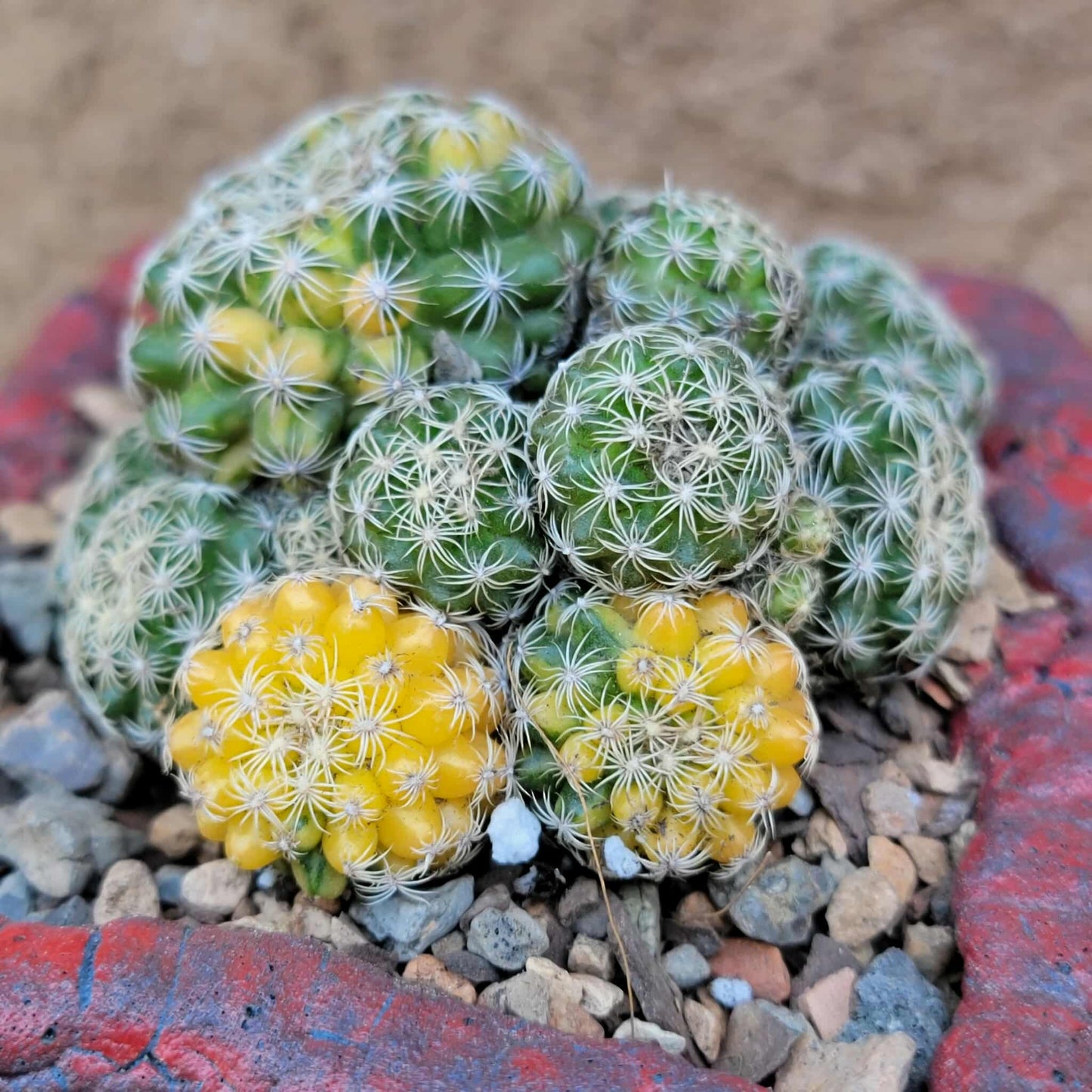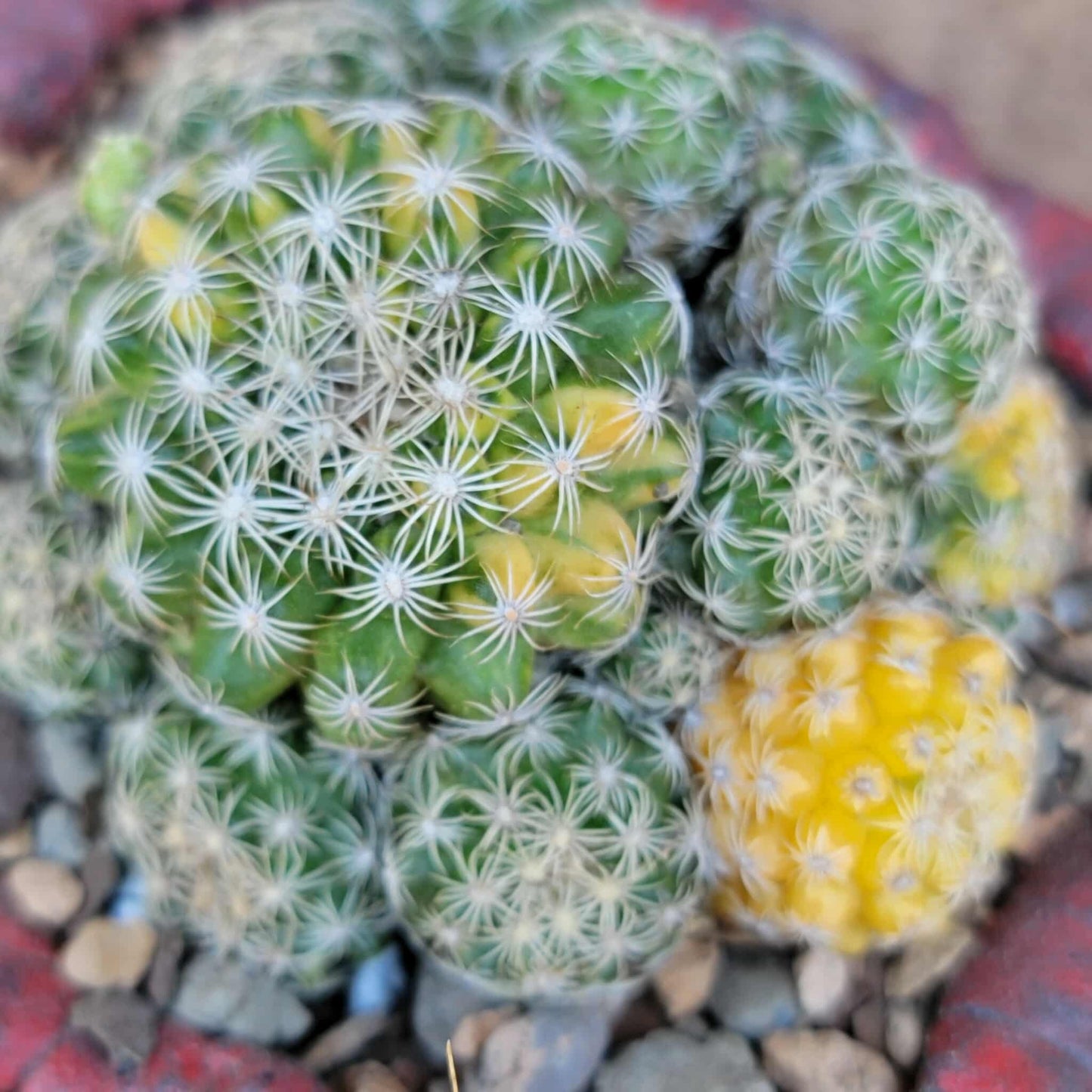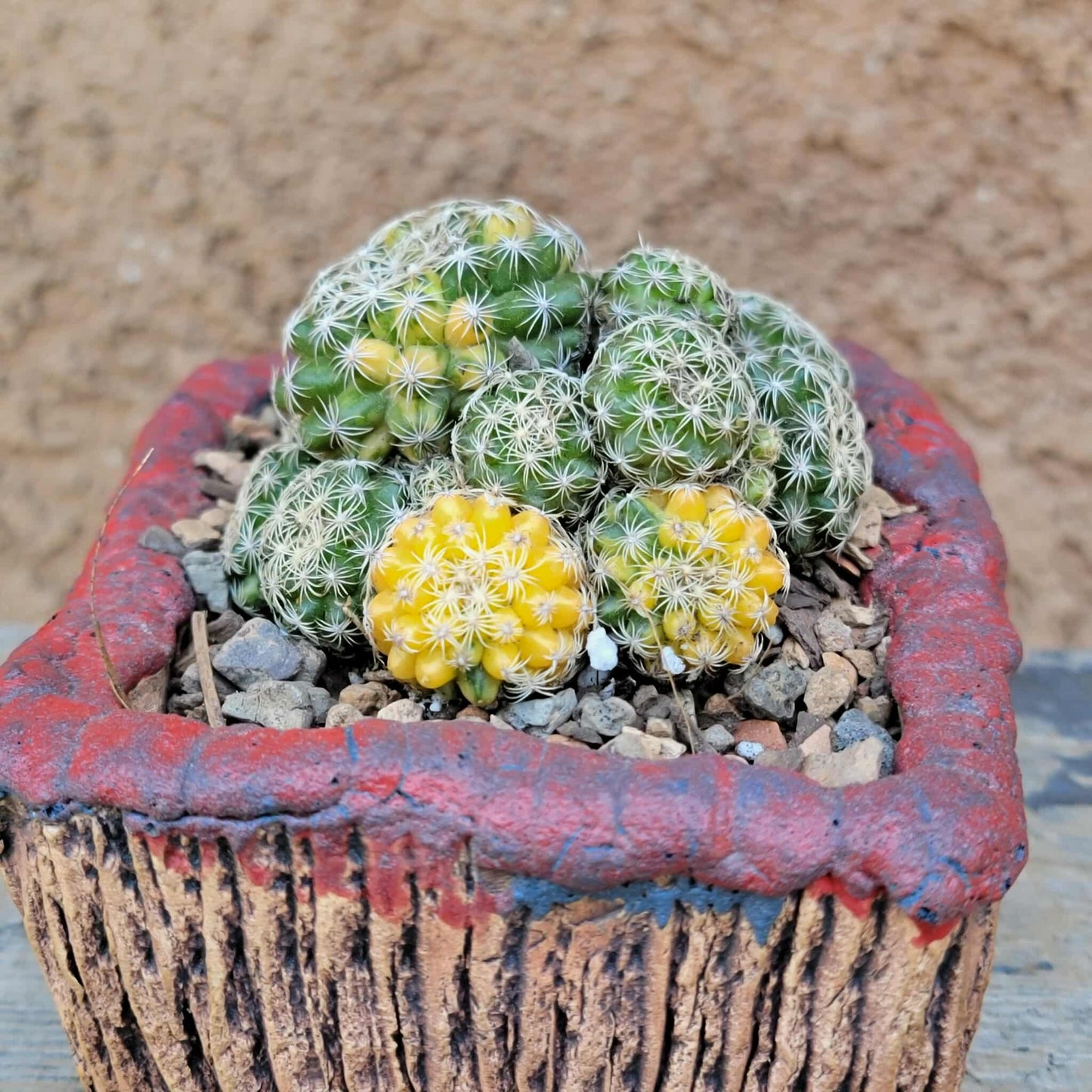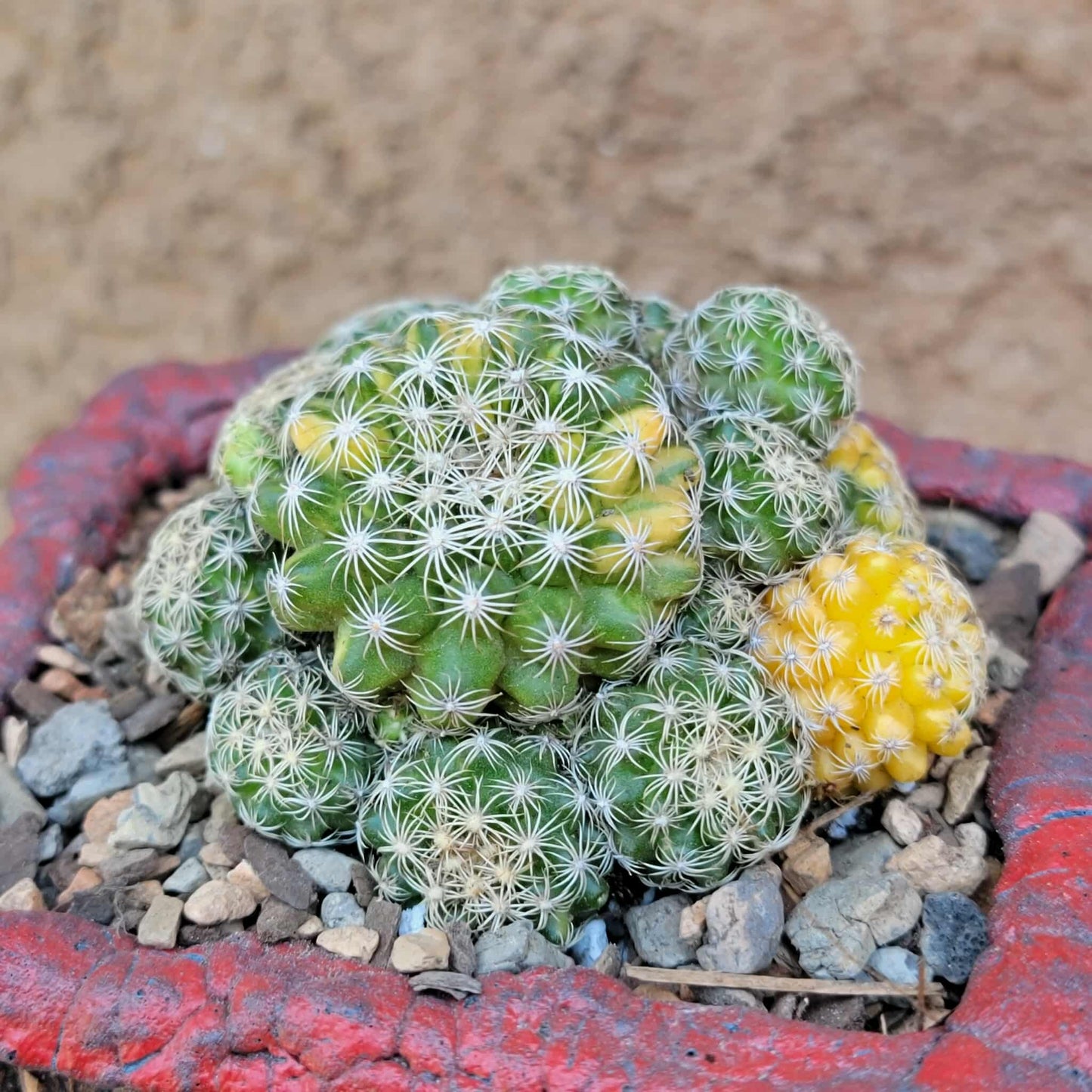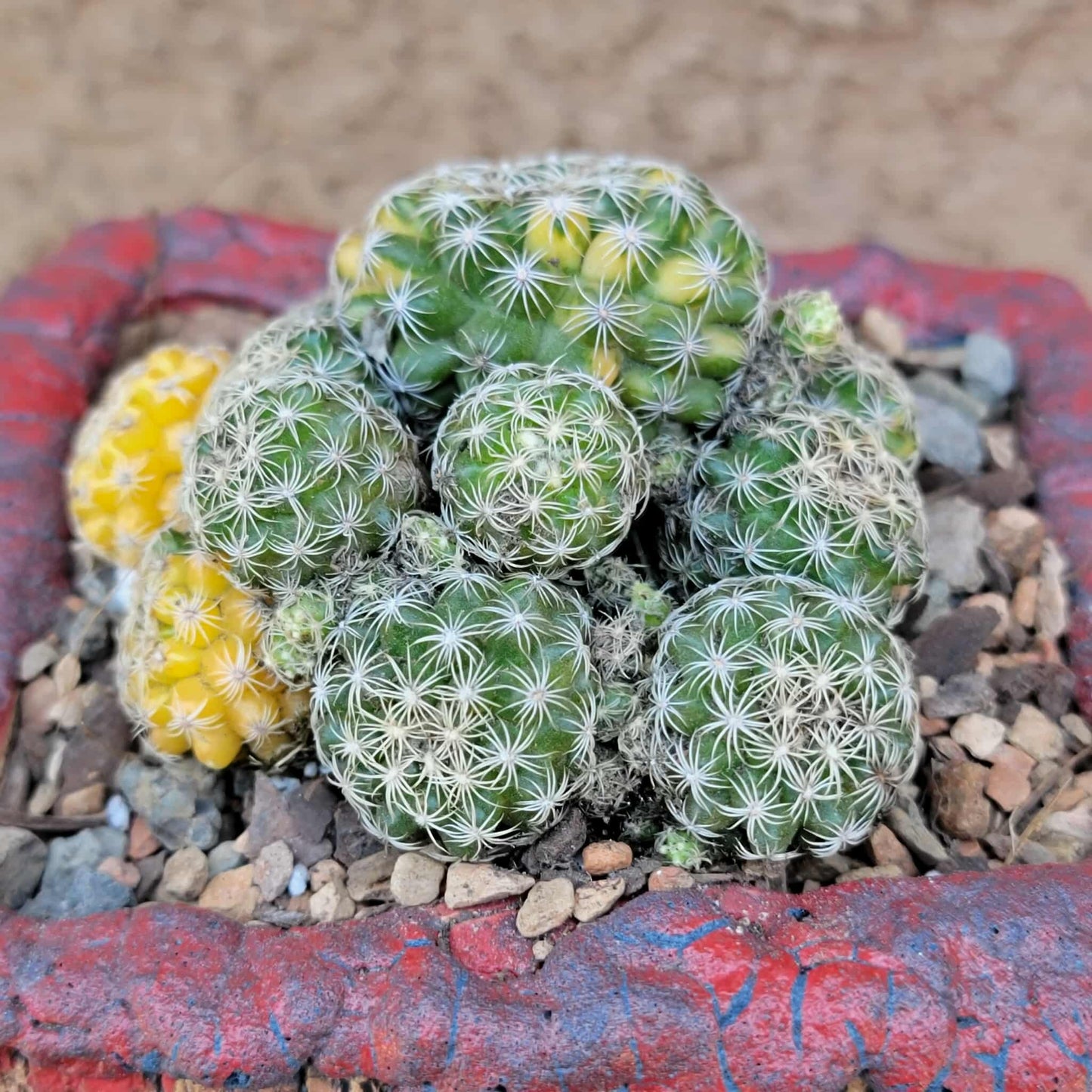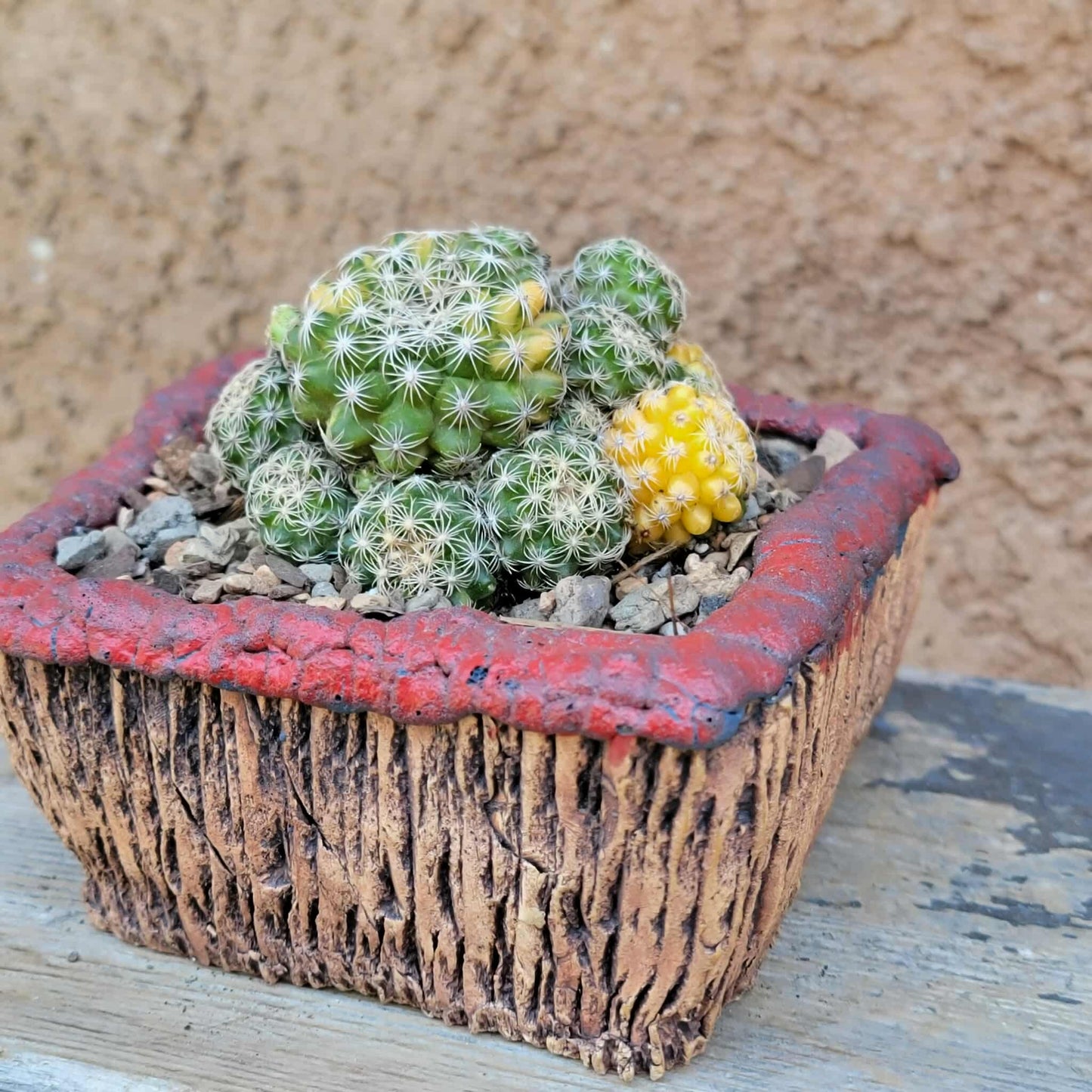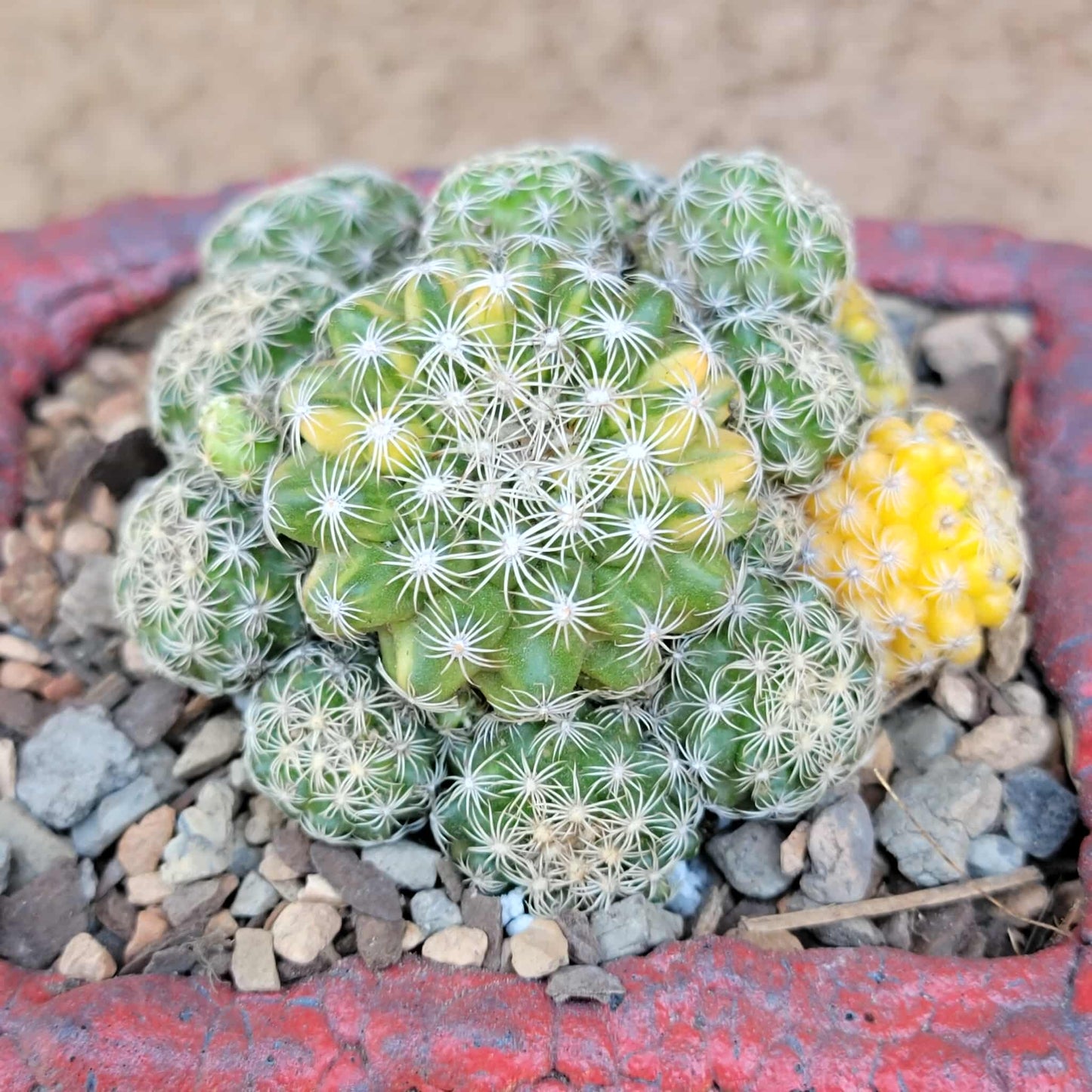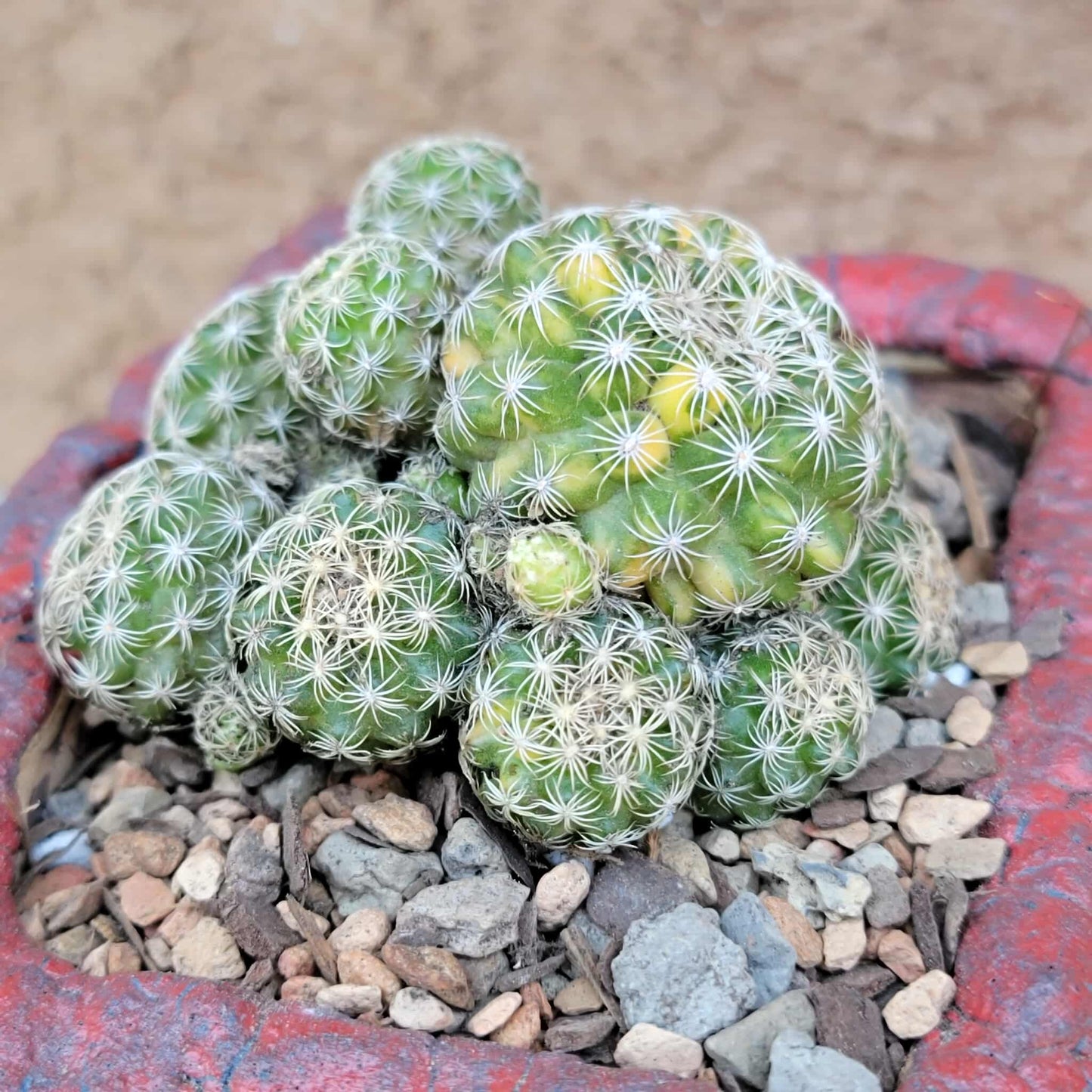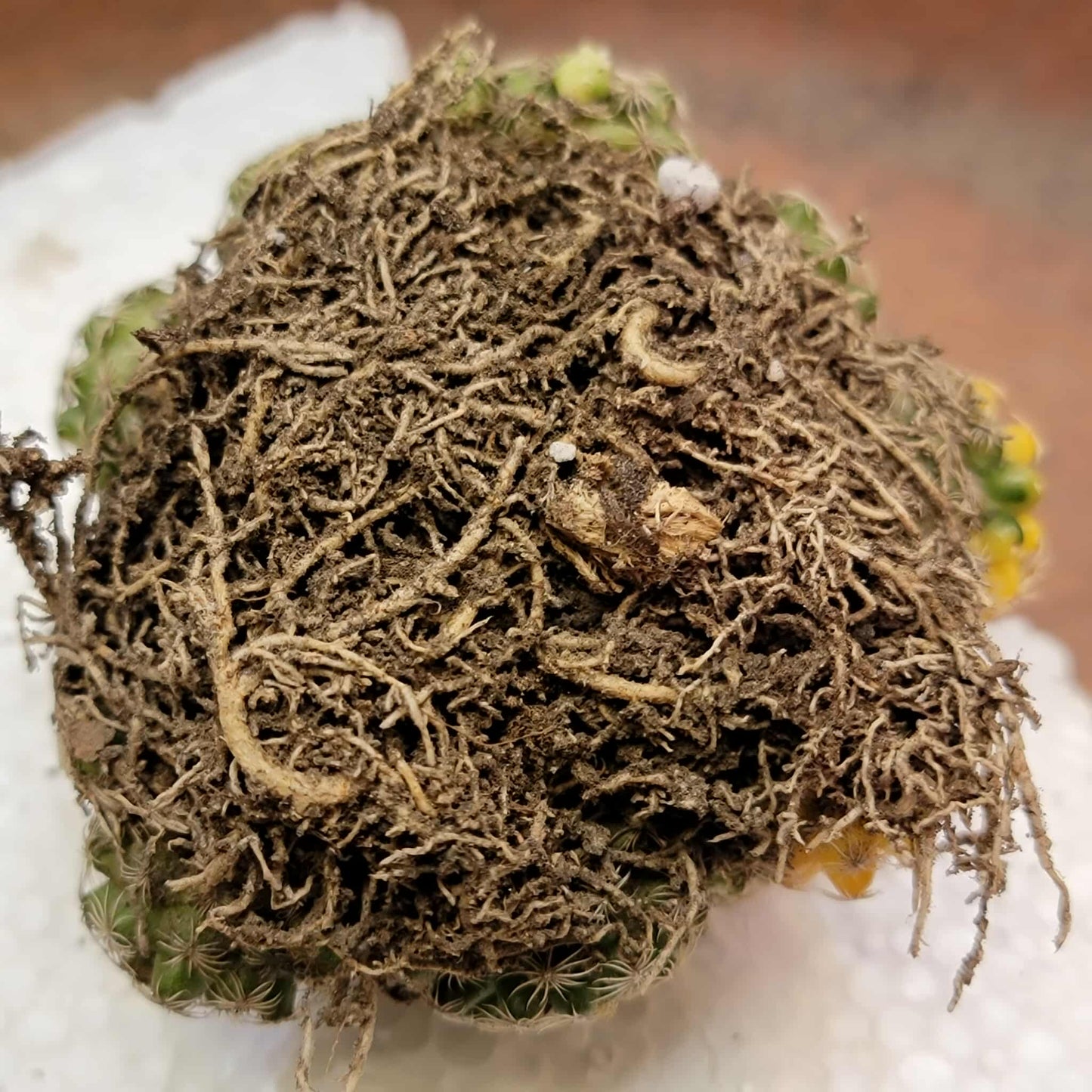Shangri-Ha Cactus Ranch
Discocactus buenekeri f. variegata
Discocactus buenekeri f. variegata
Couldn't load pickup availability
Discocactus buenekeri f. variegata
This is one of tiniest cacti! It's a true miniature and one of the smallest species in the genus. This is a mature specimen, and only measures 2" wide. It will not get any larger. Because it's mature, it puts all its energy into making a little woolly top (cephalium).
You will receive this exact specimen.
Lots of babies!
Measures 2.75" wide.
Showcased here in one-of-a-kind handmade pottery (sold separately).
Will be shipped bare root.
Discocactus buenekeri f. variegata is a highly sought-after cactus due to its rarity and distinctive variegated appearance.
Characteristics
· Miniature size: This is a truly tiny cactus, one of the smallest in its genus, only reaching about 2" in width even when mature.
· Globose-flattened shape: It has a rounded, flattened body.
· Cephalium: Mature plants develop a white, woolly cap called a cephalium, from which the flowers emerge.
· Flowers: Produces fragrant, slender funnel-form, cream-white flowers up to 9 cm long. These flowers are typically night-blooming and have a gardenia-like scent.
· Spines: Features interlacing, flexible spines, cream-white or yellowish with dark tips, densely covering the plant.
· Variegation: The 'f. variegata' designation indicates that the plant has areas of different color on its stem, typically due to a lack of chlorophyll.
Cultivation and care
· Light: Prefers bright, indirect light or full sun with some afternoon shade.
· Watering: Water sparingly and allow the soil to dry out completely between waterings. Overwatering can lead to root rot.
· Temperature: Needs warm temperatures, ideally above 60°F. If grown on its own roots, it should be kept above 15°C (59°F), and above 8°C (46°F) if grafted.
· Soil: Requires well-draining soil, such as a mix with plenty of perlite or pumice to prevent moisture retention.
· Dormancy: Expect slower growth during the winter months, when watering should be reduced.
· Repotting: This cactus generally dislikes being repotted and may take a while to establish after transplanting.
· Pests and diseases: Overwatering is a common issue and can lead to problems like rot.
· Hardiness: Suitable for outdoor cultivation in USDA Hardiness Zones 10a-11b.
· Grafting: Many Discocactus, especially variegated forms, are grafted onto other cactus rootstock to improve their vigor and ease of cultivation, as they can be challenging to grow on their own roots.
